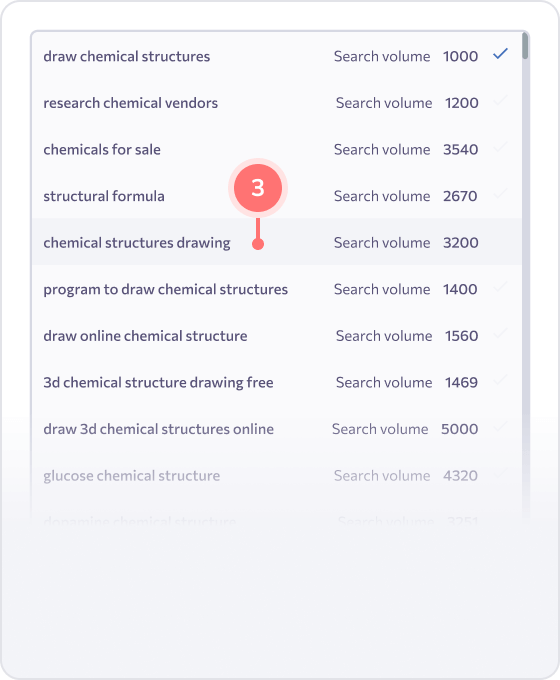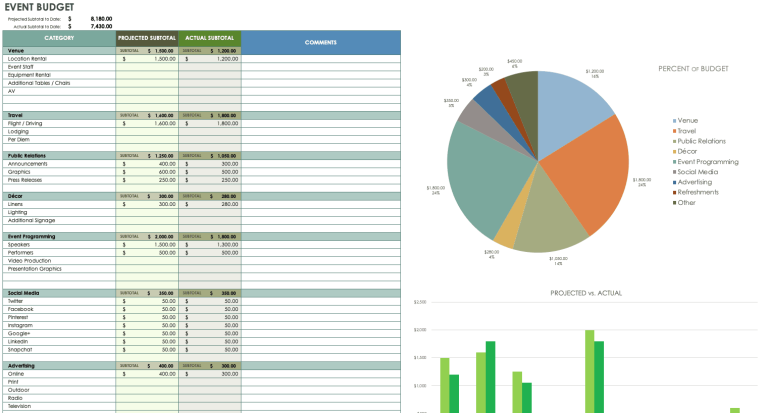
In the ever-evolving world of search engine optimization (SEO), staying ahead of the competition requires more than just understanding your own keyword strategy. It demands a deep, ongoing analysis of what your rivals are doing. One of the most powerful tools in this process is Competitor SERP Tracking, which allows you to monitor how your competitors perform for specific keywords and adjust your strategy accordingly. This article will guide you through the importance of competitor SERP tracking, how to implement it effectively, and how it can help you gain a competitive edge in 2025 and beyond.
What Is Competitor SERP Tracking and Why It Matters
Competitor SERP tracking is the practice of monitoring how your competitors rank for specific keywords on search engine results pages (SERPs). This includes tracking their visibility, content performance, and changes in ranking over time. Unlike traditional keyword research, which focuses on identifying new opportunities, competitor SERP tracking provides real-time insights into what’s working for others in your niche.
This method is crucial because it helps you understand not just the keywords your competitors are targeting, but also how they’re optimizing their content, what kind of traffic they’re attracting, and where they might be falling short. By analyzing these patterns, you can uncover hidden opportunities, refine your content strategy, and even predict shifts in market trends before they happen.
For example, if a competitor suddenly starts ranking for a keyword you’ve been targeting, you need to act quickly to either improve your own content or adjust your strategy. Competitor SERP tracking gives you the data to make informed decisions rather than relying on guesswork.
How Competitor SERP Tracking Impacts SEO Performance
The impact of competitor SERP tracking on your SEO performance cannot be overstated. Here’s how it influences key areas:
1. Content Strategy Optimization
By observing how competitors structure their content around specific keywords, you can identify gaps in your own strategy. For instance, if a competitor consistently ranks for a long-tail keyword that you haven’t addressed, it may indicate an opportunity to create targeted content that fills that gap.
2. Keyword Gap Identification
Competitor SERP tracking helps you spot keywords that your competitors are ranking for but you aren’t. These “keyword gaps” represent high-value opportunities that you can target with optimized content or improved on-page SEO.
3. Search Intent Alignment
Understanding how competitors align with user intent is essential. If a competitor is ranking well for a transactional query, you can analyze their content to see what makes it effective and replicate that approach while adding unique value.
4. Ranking Fluctuations and Algorithm Updates
Tracking competitor rankings over time can help you detect algorithm updates or changes in search behavior. If a competitor suddenly drops in rankings, it could signal a shift in Google’s preferences, prompting you to reassess your own strategy.
5. Local and Niche Market Insights
For businesses targeting local markets or niche audiences, competitor SERP tracking provides valuable insights into how others are optimizing for location-based or industry-specific keywords. This can help you tailor your content to better serve your audience.
Step-by-Step Implementation Framework
To effectively track competitor SERP performance, follow this structured approach:
1. Define or Audit the Current Situation
Start by identifying your top competitors. These are the websites that consistently appear in the top 10 results for your primary keywords. Use tools like Ahrefs, SEMrush, or Google Search Console to compile a list of domains that dominate your keyword landscape.
Also, audit your current keyword performance. Which keywords are you currently ranking for? Are there any gaps where competitors are outperforming you?
2. Apply Tools, Methods, or Tactics
Use a combination of free and paid tools to gather data on competitor SERP performance:
- Google Trends – Analyze seasonal trends and compare search interest between keywords.
- Ahrefs’ Site Explorer – Track competitor backlinks, content performance, and keyword rankings.
- SEMrush – Monitor competitor keyword strategies and track changes in their rankings.
- Ubersuggest – Get insights into competitor content and keyword difficulty scores.
- Google Search Console – Monitor your own site’s performance and identify potential issues.
Manual methods like checking competitor meta tags, page titles, and content structures can also provide useful insights.
3. Measure, Analyze, and Optimize
Once you’ve gathered data, analyze it to identify patterns and opportunities:
- Keyword Gaps: Identify terms where competitors are ranking but you’re not.
- Content Performance: Compare your content quality and depth with that of your competitors.
- User Intent: Ensure your content aligns with the search intent behind each keyword.
- Backlink Profiles: Analyze competitors’ backlink strategies to identify link-building opportunities.
Use this data to optimize your content, update existing pages, and develop new content that targets high-value keywords.
Real or Hypothetical Case Study
Let’s look at a hypothetical case study involving an e-commerce business selling outdoor gear. The company notices that one of its main competitors, OutdoorLifeCo, is consistently ranking for the keyword “best hiking boots for beginners.” However, the company isn’t appearing in the top 10 results for this term.
Using competitor SERP tracking tools, the company identifies that OutdoorLifeCo has a comprehensive blog post that covers various aspects of hiking boots, including reviews, comparisons, and buying guides. The company then creates a similar, but more detailed, guide tailored to beginner hikers, incorporating long-tail keywords and optimizing for mobile users.
After six months, the company sees a 40% increase in organic traffic from the “hiking boots” keyword, and its rankings for related terms improve significantly. This demonstrates how competitor SERP tracking can directly lead to measurable improvements in SEO performance.
Tools and Techniques for Competitor SERP Tracking
Here are some of the most effective tools and techniques for competitor SERP tracking:
- Ahrefs – Offers detailed keyword and backlink analysis, making it ideal for tracking competitor performance.
- SEMrush – Provides real-time tracking of competitor rankings, keyword gaps, and content performance.
- Moz Pro – Helps you monitor competitor keywords and track changes in rankings over time.
- Google Trends – Useful for identifying seasonal trends and comparing search volume between keywords.
- Ubersuggest – Offers insights into competitor content, keyword difficulty, and backlink profiles.
- AnswerThePublic – Helps you discover questions and topics that users are searching for, which can inform your content strategy.
Each tool has its strengths, so using a combination of them can give you a more complete picture of your competitors’ performance.
Future Trends and AI Implications
As AI continues to shape the future of search, competitor SERP tracking will become even more critical. With the rise of voice search, natural language processing, and multimodal search, the way people interact with search engines is changing rapidly.
AI-driven tools like ChatGPT and Google’s own AI models are already helping marketers analyze competitor content and identify semantic keyword opportunities. In the future, we can expect even more advanced tools that provide predictive insights into competitor strategies and emerging trends.
For example, AI could soon help you identify which competitors are likely to gain or lose rankings based on changes in search algorithms or content updates. This level of foresight will allow you to stay ahead of the curve and adapt your strategy proactively.
Key Takeaways
- Competitor SERP tracking is essential for understanding how your rivals are performing and identifying opportunities for improvement.
- Keyword gaps and search intent alignment are key areas to focus on when analyzing competitor performance.
- Tools like Ahrefs, SEMrush, and Ubersuggest offer powerful insights into competitor strategies and keyword performance.
- Continuous monitoring and data-driven adjustments are necessary to stay competitive in the ever-changing SEO landscape.
- AI and machine learning will play an increasingly important role in predicting competitor movements and optimizing your strategy.
By implementing a robust competitor SERP tracking strategy, you can gain a significant advantage in the digital marketplace and ensure your website remains visible and relevant to your target audience.
Meta Title: Competitor SERP Tracking — Monitors Rival Keyword Performance
Meta Description: Learn how to effectively track competitor SERP performance and optimize your SEO strategy for 2025 and beyond.
SEO Tags: Competitor SERP Tracking, SEO Strategy, Keyword Research, Content Optimization, SEO Tools
Internal Link Suggestions:
– How to Effectively Track Competitor SERP Performance and Optimize Your Strategy
– The Strategic Value of Competitor Keyword Analysis
– How to Analyze Competitor Keyword Data
External Source Suggestions:
– Google Trends
– Ahrefs Blog
– SEMrush Academy








